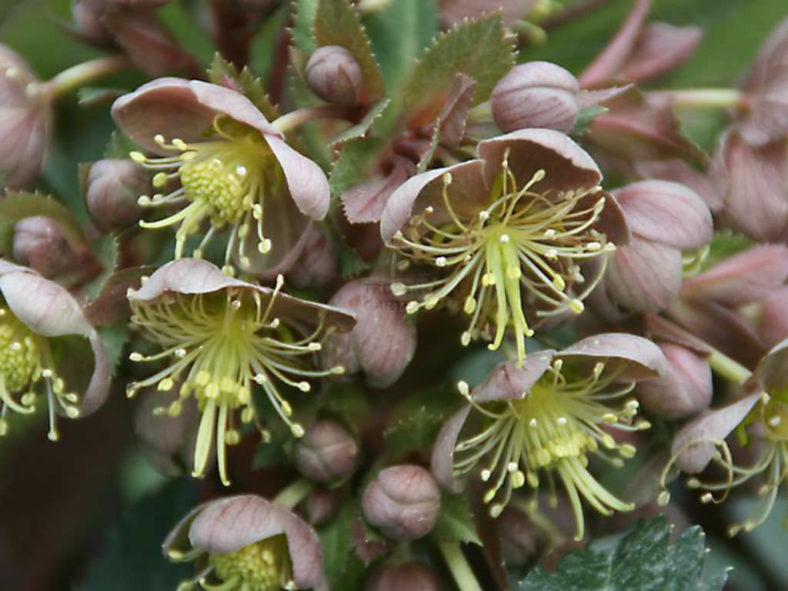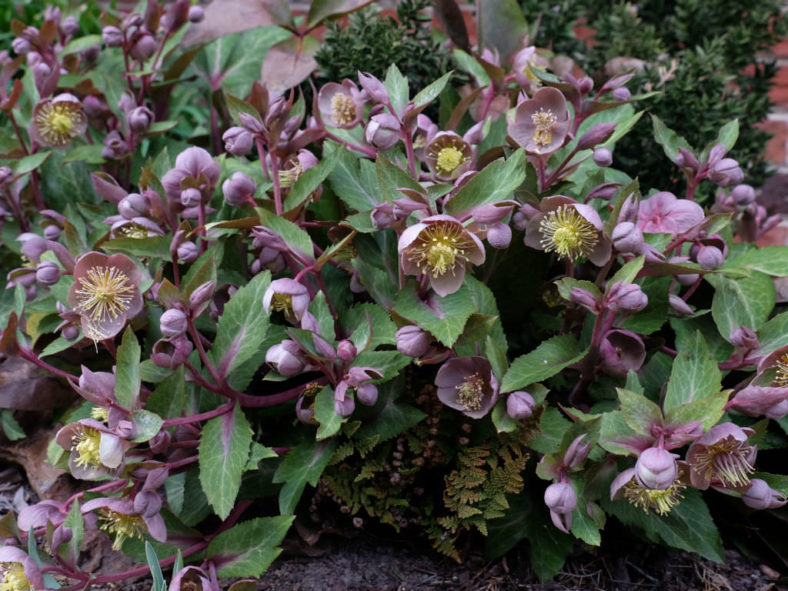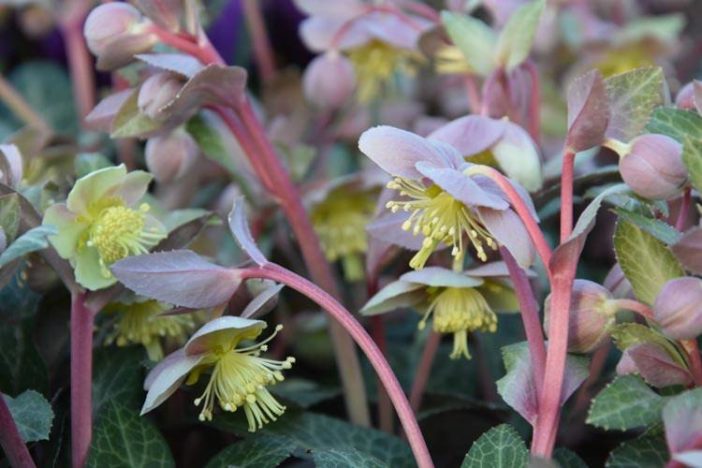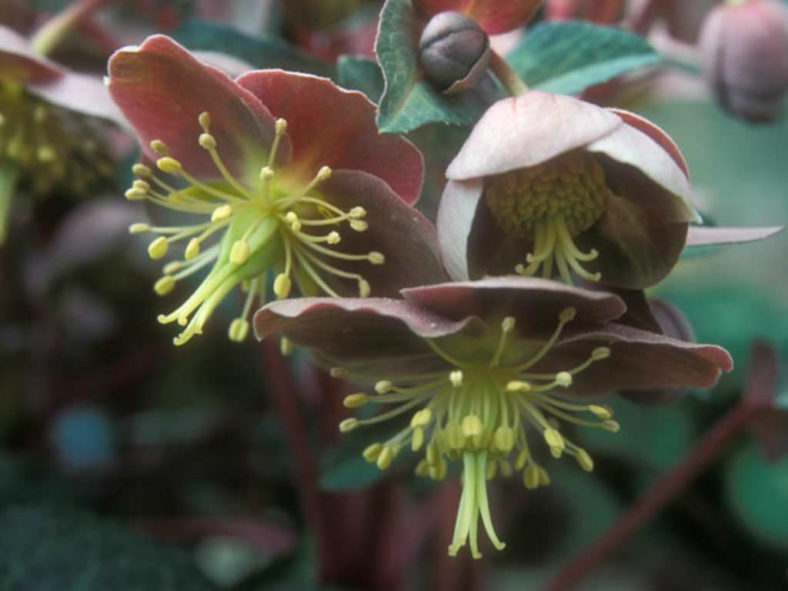Scientific Name
Helleborus lividus Aiton ex Curtis
Common Name(s)
Majorcan Hellebore, Blue-Grey Hellebore, Purple Hellebore, Lenten Rose, Livid Lenten Rose
Synonym(s)
Helleborus trifolius subsp. lividus, Helleborus trifolius var. lividus, Helleborus triphyllus
Scientific Classification
Family: Ranunculaceae
Subfamily: Ranunculoideae
Tribe: Helleboreae
Genus: Helleborus
Flower
Color: Pinkish-green
Bloom Time: Midwinter to early spring
Description
Helleborus lividus is an evergreen perennial with biennial stems and glossy, deep green or bluish-green leaves. It grows up to 18 inches (45 cm) tall and 12 inches (30 cm) wide.
The flowers are pinkish-green, up to 2 inches (5 cm) wide, and borne in open clusters from midwinter to early spring.

How to Grow and Care
Place the Hellebore into well-draining, organic soil in filtered sun or a shady location when planting from seed or division. The Hellebore plant will return for many years. Ensure the space will accommodate growth and has proper sunlight.
Hellebores need a few hours of dappled light and grow successfully in shady areas. Plant the Hellebore under deciduous trees or scattered through a woodland garden or shaded natural area.
Soaking the soil in which the Hellebore is growing helps the Hellebore plant to look its best. Hellebore care includes the removal of older leaves when they appear damaged. Care for Hellebores should also include careful fertilization. Too much nitrogen may result in lush foliage and a shortage of blooms.
Plant Hellebore seeds in the fall. A 60-day moist chilling period is needed when planting seeds of the Hellebore plant. Planting seeds in fall allows this to happen naturally in areas with cold winters. Wait three to four years for blooms on young plants grown from seed. Divide overgrown clumps in spring, after flowering, or in fall.
See more at How to Grow and Care for Hellebores.
Origin
Helleborus lividus is native to Majorca and possibly nearby Cabrera, Spain.
Subspecies
Links
- Back to genus Helleborus
- Plantpedia: Browse flowering plants by Scientific Name, Common Name, Genus, Family, USDA Hardiness Zone, or Origin
Photo Gallery
Click on a photo to see a larger version.




